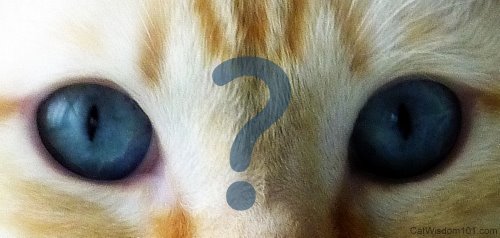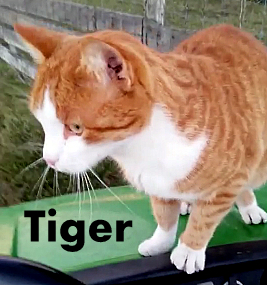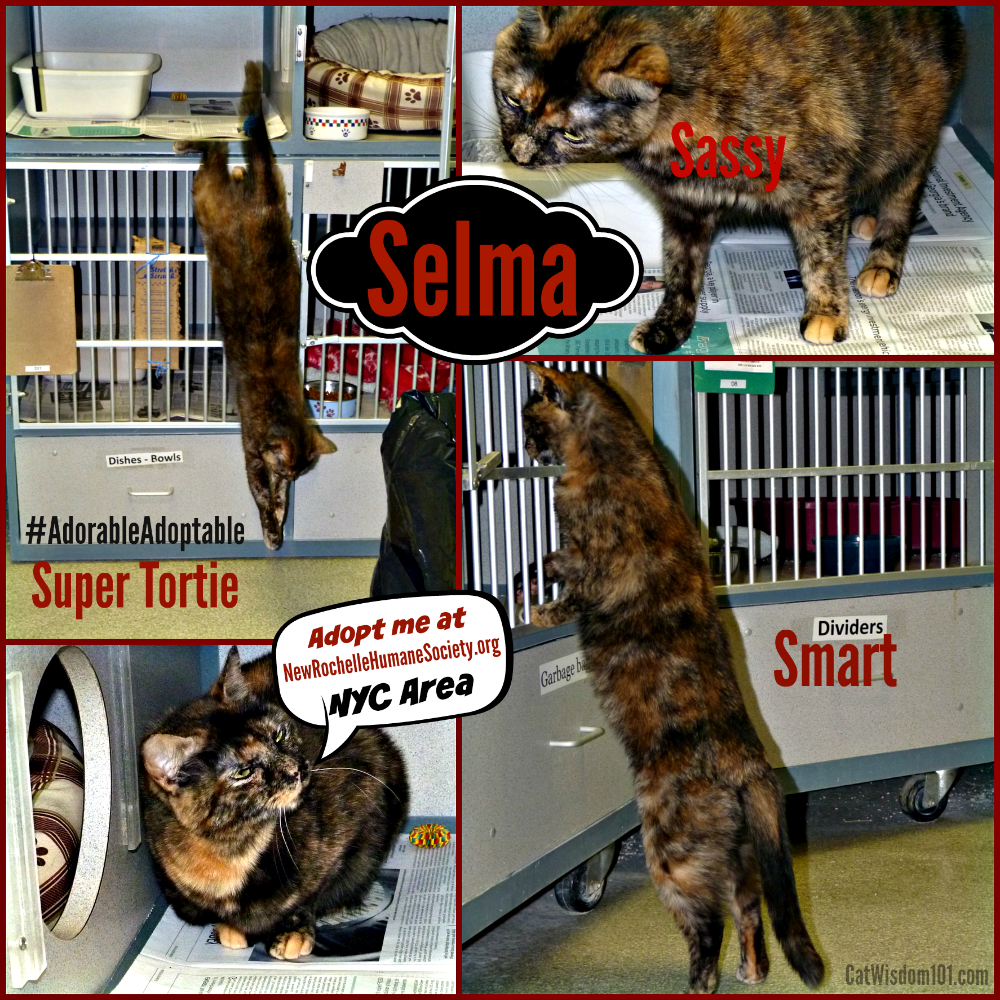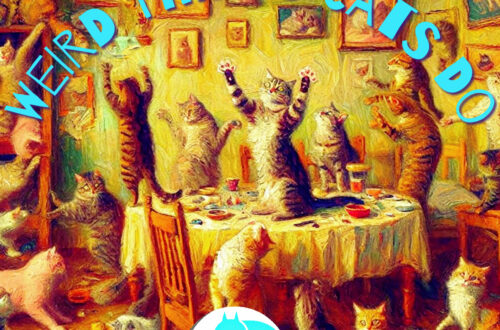Vet 101: Choosing The Best Cat
Q: In your experience, have you found any truth to breed stereotypes? I’m thinking of adopting my first cat and have heard so many confusing opinions such as orange cats are good tempered, black cats are the least popular, torties are feisty, Siamese are hyper, Persians need too much grooming. I just want a friendly easy-going cat. Any advice?
A: In an age where the word “stereotype” can ruffle lots of feathers, let’s talk about some of the common characteristics of cat breeds: they are furry (well, except for the hairless ones), they purr (except for the ones that don’t), they’re independent (except for the ones that are social). My point is: every cat is an individual, and should be judged as such. I loved my orange cat “Charlie”. He was the friendliest cat I ever met – he could have run for mayor. But just last week, I saw an orange cat that the owner had dubbed “demon cat” because of his less-than-friendly demeanor at home. The characteristics that you mentioned are sweeping generalizations that some owners would agree with, and some wouldn’t. And very often, the situation that a cat finds himself in will affect his personality much more than his breed. I find that very hyper pet owners often have very hyper cats, and easy-going pet owners often have easy-going cats. Even diehard breed-specific owners will often say “this cat is not your typical Siamese/Maine Coon/Persian.” Who’s to say what’s typical? Who’s to say which personality is right for you?
Here’s my advice when trying to choose a cat: Go to your local shelter and visit with some cats. They’re loving, wonderful pets just waiting for a terrific forever home. Some shelters (like New Rochelle Humane Society) have big rooms where lots of cats roam free, and you can judge for yourself. I guarantee you’ll know which one is right for you. When I got my first cat, I said, “the first one that comes over to me and squints his eyes like George Burns is the one for me.” Seconds later, my cat “Salem” did just that – and he was with me for 14 years (and he did the BEST George Burns imitation!). He was a plain old domestic short haired tabby cat with a feisty personality, sometimes hyper, but overall good-tempered and easy-going, who never needed help with his grooming. He was all the stereotypes wrapped up into one, and that’s what I love.
Editor’s Note: I agree with allowing a cat choose us without a premeditated agenda. Even breeds with distinct characteristics can have exceptions. When I was a teenager, I’d heard Siamese cats could be high-strung, but that didn’t stop me from adopting my first Siamese. She turned out to be the sweetest cat and I was instantly hooked on the breed for their intelligence and affectionate nature. It’s a question of knowing what you can live with. Chatty Siamese cats can drive one crazy with their loud talking. Merlin, true to his breed has the lungs of an opera singer, but I wouldn’t have it any other way.
Updated info: May 2020
When we cat lovers discuss our fabulous felines, we usually compare their personalities. And, the conversation often includes color. How many times have you found yourself saying something like ‘our tabby’s a free-spirit but loves cuddles’ and found a fellow tabby owner nodding in agreement? So, are characters and coats linked or are we just a little too fond of stereotypes?
Humans love logic and tend to put everything into neat little boxes. If, like me, you’ve actually tried putting a cat into a little box (in my case it was a badly-designed pet carrier), you’ll know that throughout history, researchers have been trying to pigeon-hole pussy-cats.
In 1876 Dr William Gordon Stables wrote a book called ‘The Domestic Cat’. He was convinced that a cat’s make-up was determined by the color of its coat. He said that the silver tabby is a sweetly pretty cat that is proud, elegant, fond to love and quick to resent an injury. Stables also thought that red tabbies were fierce hunters. The tabby time machine whizzes forward to 1995 and France’s Université Lyon 1 where Dominique Pontier et al ‘s research was published. This links coat colors to genetic profiles and behavioral differences. It revealed that the orange may be linked to aggressiveness in males and that they’re often to busy fighting off the competition in order to have the pick of the females.
One hundred years earlier, a well-known vet called Dr Rush Shippen Huidekoper (now there’s an impressive name for a kitten!) wrote a book called ‘The Cat’. He thought that the gene that causes cats to have white fur was responsible for a deterioration in their temperaments. He said that black and white cats were the most likely to become fat and wretched: ”This is a selfish animal and is not one for children to play with.” (At this point, I can imagine thousands of Felix fans screaming in disapproval).
Huidekoper also said that tortoiseshells are great hunters; they are brave but ill-tempered and unaffectionate. In addition, he thought that tortie and whites were vain (due to having to clean their white fur so often). He adds “An all-white cat is timid and fond of petting. It would much prefer to be fed from the saucer than go roaming for prey.”
By now, like me, you probably have mixed feelings. While I was researching this subject, I found that most of the information available was based upon observation rather than science. Sarah Hartwell, in her web article, Is coat color linked to temperament? alludes to a survey that asked owners and vets to associate cats’ colors and their personalities. They said that blacks were stubborn and friendly; whites were timid; gingers were shifty; grays were calm; tortoiseshells were naughty; black and whites were wanderers and tabbies were home-loving.
One cattery owner, George Ware, was so fascinated by the relationship between cats’ personalities and their colors that he carried out his own on-the-job research. He concluded that ginger-and-whites are big softies who are laid back to the point of laziness. He said that they ‘like being stroked, but dislike being picked up and cuddled.’
Unlike Huidekoper, Ware observed that tortoiseshells and tortie and whites are ‘friendly and gentle but like being outdoors.’ He says the silver tabby is a ‘bouncy, powerful, dominant cat that enjoys human company but not sitting on laps.’ Ware saw the grey tabby as friendly and relaxed to the point of laziness.
And, the moment you previously-offended Felix fans have been waiting for – Ware’s view of black and whites is that they’re true lap cats – they’re very loyal but liable to be moody. He saw black cats as independent and good hunters.
Over the years, I’ve been owned by cats of many colors and I’ve formed my own opinion: there is a cat for every kind of human.





11 Comments
Oui Oui
We have done both, although we have also taken cats just because they needed a home – there was no picking on either side. We were there, they needed someone & we said yes. I think it doesn’t much matter. If you treat them right, they will do right by you (mostly, sometimes they come with baggage). I think the cats with the sweetest temper and sunniest disposition are little brown tabbies, and males are easier going and less complicated than females.
Ingrid King
Since I’m currently living with my fourth and fifth torties, you’d think I intentionally picked that particular kind of cat. Far from the truth. All of my cats picked me, and I wouldn’t want it any other way.
Abby
Mom chose me from across the room, the only problem is at the time I was bonded to a 7 yr old girl who Dad hated me and made her give me up. Mom learned all of this later, but that first day I was nasty to Mom and HISS and ATTACKED like I meant to do some harm. The next day I was better, but I am still feisty. I love love love the Mom now, but I think what was said is true. Each kitty has their own individual personality. My 4 other brothers and sisters are all fairly laidback, while I am Miss Fussy. It’s a good thing I’m here, no one else would have claimed the top cat spot.
purrs
>^,,^<
♥Abby♥Boo♥Ping♥Jinx♥Grace♥
Deb Barnes - Zee and Zoey
Sometimes cats have the sterotypical traits they are labeled with and sometimes they don’t – it’s alot like the Zodiac signs – many of us are “true” to our signs and many of us are not – a lot of it is subject to broad intrepetation. I think most of it has to do with the environment a cat is raised in and the personality of the owner. I have had every type of cat you can imagine – from stray cats that have “found” me, to cats I have gotten at shelters, to cats I have gotten from breeders. Each one of them has brought me my own unique joy, but I will admit that most of my cats have stayed quite true to the breeds that they are. Sometimes with strays you are not always quite sure what breed the cat is – more times than not, it is a mix, so you can’t always guage a cat by the characteristics given to the breed either.
John
I think cats is most friendly pets for sure, but I also agree that “We have always let our cats choose us”:)
Cheysuli
The Woman found Gemini right after two other cats had died. A couple of other of our cats just sort of migrated here and insisted on living with the Woman so she says she has rarely had a chance to pick a cat. She got me from a breeder who was petting me out because she had loved her last Siamese so much. I am nothing like that other cat, although I am very loyal and very affectionate (but only to her and only in her place). I don’t talk much all things considered either. Ichiro was chosen from the shelter. The Woman feels she bonded personality wise with a few other cats more but Ichiro was a Siamese. She really wanted another Siamese for me as she had always heard that Oriental breeds tend to get along best with their own kind. Ichiro and I certainly do seem to enjoy each other more than either of us enjoy Gemini but it could be because she really isn’t a social cat, either for humans or other cats.
MK
I volunteer at a no-kill, cage-free cat shelter. A lot of times when people come in to adopt, they say they want a cat to pick them. I think that is a good idea for some people. Often times people want an outgoing kitty and that is who they are drawn to when they come to the shelter. And often times the shy kitties, or the ones that are afraid of living with 100 other cats, get overlooked..they are to scared to jump down and pick their person..they are waiting for their person to pick them. I adopted one of the shyest kttens we ever had..she hid under a pile of kittens when you went into the kitten room..if she wasnt under some kittens, she would run as fast as she could to get away from people. I chose her because I knew no adopter that walked in the door would…after 2 months of refusing to come out of her room, she turned into the most loving, sweetest kitty. She loves to be held and sit in my lap.I love her more than anything. So please dont over-look the shy cats that dont pick you..with time and patience, they will be just as outgoing and loving as the ones that jump in your lap the minute you walk through the shelter door.
caren gittleman
I loathe stereotypes of any sort, hence “Here’s my advice when trying to choose a cat: Go to your local shelter and visit with some cats. They’re loving, wonderful pets just waiting for a terrific forever home. Some shelters (like New Rochelle Humane Society) have big rooms where lots of cats roam free, and you can judge for yourself. I guarantee you’ll know which one is right for you.”
is the best advice.
CATachresis
I think that choosing a cat is down to the individual preference, but I do not advocate designer type kitties that are bought purely for their decorative qualities, without thought for their needs or requirements as sentient beings.
However, I think that each of us has a personality and lifestyle that would suit a particular breed or even no breed! Personally I go for rescue mogs. They deserve a break 🙂
MoMo
We have always let our cats choose us….and it has always worked well, whether from a shelter or just strays who wandered in and took up residence.
Kathryn
How adorable. This conversation is great. I was heartened to hear about the vet’s super friendly orange boy, Charlie, because he reminds me of you-know-who? Yep, the Chedster. Our calico was feisty, my husband’s tortie was feisty; our Siamese (when I was a child and teen – about 5 Siamese total were independent and very devoted; our green-eyed brown tabbie girl, Emma, also very affectionate. We had a solid black boy who was very shy but very affectionate and our Tux, Mao, is also shy but affectionate and very curious. When he was rescued at 2 months by the shelter, he’d already discovered a rose bush with a thorn in his nose to prove it.
Yes, a good match is important. And how does one know? You said it. By visiting with them.
Growing up all our cats were rescues from shelters.